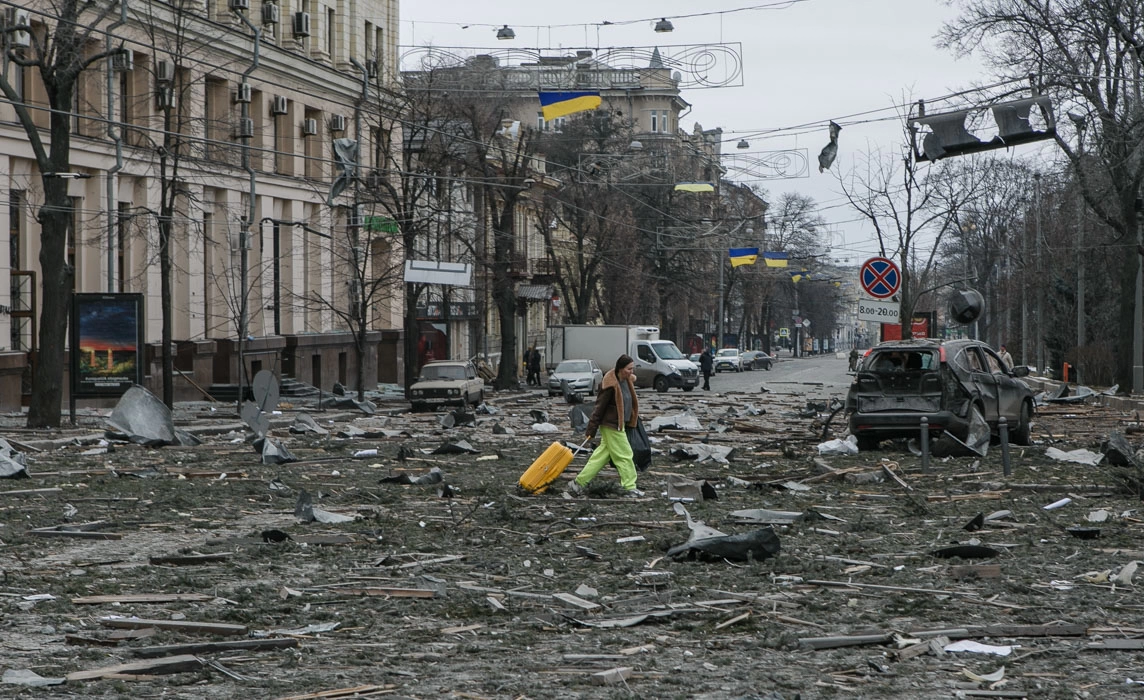As people and goods migrate from one place to another, so do plants, insects and animals. Some of these species survive the journey, multiply uncontrollably and deeply affect their new ecosystems, in which case they are considered invasive species.
In this comparative analysis, Scena9 (Romania) and RADAR (Italy) report how these two countries respond to three important invasive species: ragweed, a common cause for severe allergies, the golden jackal, a target for farmers and shepherds, because it sometimes attacks their livestock, and the Asian hornet, a very proficient honeybee killer has been generating annual costs of tens of millions of euros. How do Romanian and Italian public authorities, NGOs and communities deal with the intricate challenges of invasive species ? What efficient solutions have they found and what can they learn from one another?
Black or brown rats preying on various species of birds, Asian tiger mosquitos, which may transmit diseases, or box tree moths, which make the headlines from time to time for devastating boxwood shrubs used in parks and gardens – these are some of the most common species defined as invasive. Humanity’s second favourite pet, domestic cats, are also part of this category, as they kill billions of birds and other small creatures each year, but we seem to have a double standard for purring felines.
While some species travel naturally to new areas, the most important pathways for invasive species are mediated by humans. Global shipping, trade in ornamental plants, pets or aquariums, transport of used tires and agriculture are the most common of all.
And while many species adapt to the new environment without negative consequences, researchers say there are more than 3,500 alien species introduced by human activities which have harmful effects on humans, animals and plants. The same report by Intergovernmental Platform on Biodiversity and Ecosystem Services shows invasive species have a significant contribution to 60% of global plant and animal extinctions. This makes them one of the five key drivers to biodiversity loss worldwide, along with changes in land and sea use, direct exploitation of species, climate change and pollution.
The economic burden of these species is estimated over 400 billion dollars each year and in the long term, the magnitude of their effects is comparable to other global challenges, such as natural disasters. Crop damages, decrease in livestock productivity, timber losses or even physical damage to infrastructure are just some of the major sources accounting to such a high figure.
Invasive species also generate significant health-related costs for humans and animals: from disease transmission and allergies, to contamination of food and water. The Asian tiger mosquito, for example, linked to a rise in dengue fever in Europe, requires significant budgets each year, with millions of euros being spent in the countries where it is a threat to public health. Another huge is ragweed (Ambrosia artemisiifolia): over 23 million people currently suffer from allergy to its pollen. Projections indicate that, due to climate change, by 2041-2060 around 77 million Europeans will be allergic to this widespread plant.
How do we Italy and Romania learn to live with some of the most challenging invasive species in their territories?
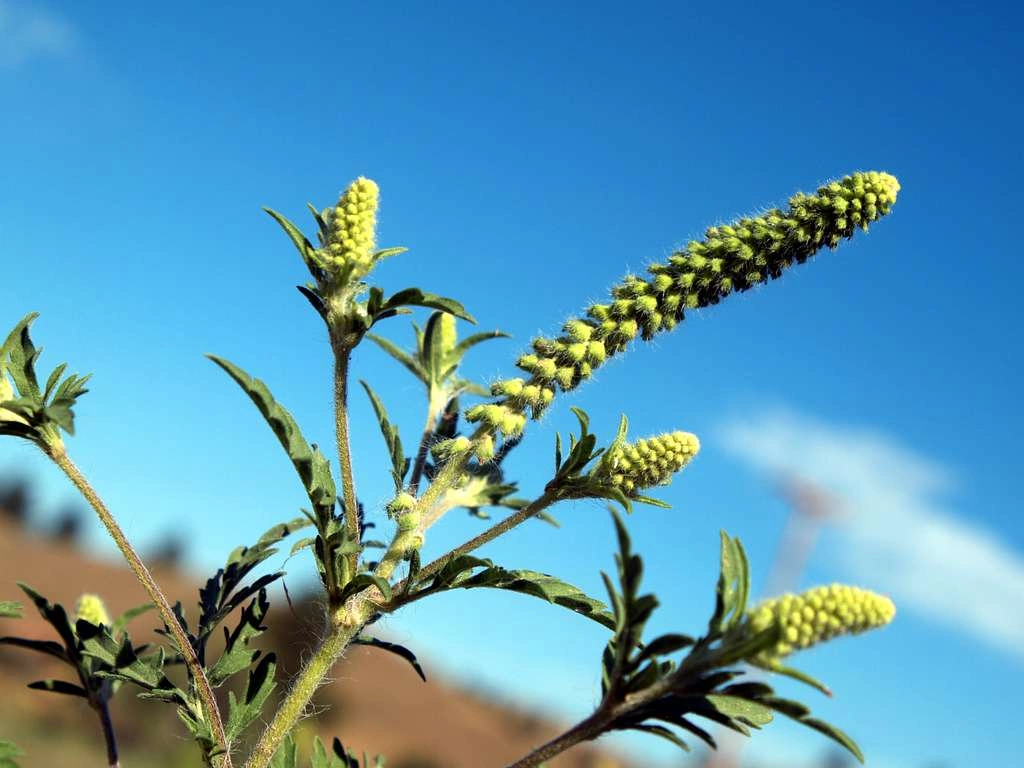
Citizen-led initiatives in Romania try to fight ragweed, the plant that makes as lose our breath
Over the past week a news headline made its way in Romanian feeds, both as a serious news and as a meme: A man from Bucharest set fire to 25 acres of land, to remove the ragweed that caused him a bad case of allergies. “I developed depression because of it, " said the man to the cops. While this is an extreme case, it does mirror the despair one can feel when suffering from an allergy induced by this plant that, according to studies from 2020, affects 13.5 million Europeans.
This plant, native from North America, was first recorded in Europe in the late 19th century, when most likely it arrived on the continent through contaminated shipments of agricultural products such as grain and birdseed. Now, it costs EU countries around 7.4 billion euro each year. According to official estimates, 482,000 of Romanians were allergic to the plant in 2019, but experts say the real and updated number is far higher now. According to Stop Ambroziei, a NGO dedicated to fighting ragweed, the more realistic number is 2,5 million people.
From late summer, until late October, sneezing, coughing, red eyes, fatigue and even headaches are very common among the people who suffer from it, both in urban and rural areas. In many cases, the allergy may turn into asthma. All the three people from Scena9 working on this article have had a hard time reporting on ragweed because of this allergy that is becoming more common every year.
“I think ragweed is favored primarily by the fact that it has a great adaptability to environmental conditions,” explains Paulina Anastasiu, professor and doctor at the Faculty of Biology of the University of Bucharest and coordinator of the Botanical Garden of Bucharest. It likes these unkempt places and this is probably one of the main causes of ragweed becoming such a constant presence not just in Romania, but in many more Eastern countries. In an academic paper, Hungarian scientists link ragweed expansion with the political transition of the ‘90s, when “large, formerly well-kept agricultural fields were abandoned and quickly colonised by A. artemisiifolia.” Ragweed seeds travel by wind, birds or by accident, in cereal transports or human luggage. It grows faster then in its North American home.
The main public response to this problem is up to this day a law introduced in 2018, updated in 2023. The law says that land owners as well as public administrators must prevent and destroy ambrosia when it is present on their lands. This must be done by mowing, pulling, herbicide or other specific methods. The fine is up to 5.000 lei for individuals (aprox 985 euro) and 20.000 lei (approx 3,940 euro) for legal entities. While a necessary step forward, the law is still not enough. Fines are rather low and its not always applied.
„Complete eradication of this plant is unlikely, but controlling it is absolutely possible,” says Roxana Hügel, Executive Director of the Stop Ambrosiei, an NGO started by a small group of volunteers who suffer from this kind of allergy. „We can significantly reduce its impact through annual interventions and consistent enforcement of the law. Coexisting with ragweed means having an informed and engaged society, where authorities and citizens work continuously to keep the plant under control."
The focus of the organisation is to raise awareness about the dangers this plant poses and to lobby for more efficient policies and a better law. They organize online educational campaigns about the effects of ragweed and the legal obligations of land owners. Some classic solutions that the organization promotes are repeated mowing before the flowering period; manual removal of the weed on small areas (with protective equipment – the plant can cause skin irritation); application of selective herbicides where permitted by legislation; replanting of cleared land with red/green clover, echinacea, or other competitive plants; controlled grazing with goats or other small herbivores; annual monitoring of affected areas by a local anti-ragweed task force, made up of volunteers and institutions (public health authorities, local councils, local police, civil society). At the moment, none of these measures are put systematically into practice, and the NGO hopes to find funding for at least a few of them. Until then, the main activity is educating, raising awareness and lobbying for a better law.
In order to amplify their effect, Stop Ambroziei also works with Harta Ambroziei, another citizen-led initiative to fight this invasive plant. In 2020, Victor Zamfir, a young man working in the IT business, called the municipality of the village he lives in, to complain about the ragweed on the abandoned fields nearby. At the time, there were some online communities organized in WhatsApp groups, in order to report the presence of the ragweed in various places, then send formal complaints to public authorities. But the process was tedious and the communities were small. So Zamfir decided he could do it better. He created an online map, Harta Ambroziei (Ragweed Map), a crowdsourced tool connected to Google maps, used to spot ragweed. When you see this plant, you mark the general area on the map, then allow the website to access your location. You upload a few photos with the specific place, then you get an automatic form to make a legal complaint. After you fill in your information, the form is sent automatically to the authorities in your area, to the Environmental Protection agency and sometimes to the local Police. In 2025, 865 complaints were filed using the system he created.
On hartamabroziei.ro you now find articles detailing how to recognize the ragweed from other similar plants, a list of doctors that treat allergies, advice for parents of children suffering from ragweed allergies, information about the way urban pollution amplifies the allergenic effects of the plant. According to a survey open on this website, most of the people reported they started suffering from this specific allergy around 2019.
There are of course a lot of limitations to this crowdsourced map. First of all, it is only a tool to ask authorities to clean up the land where this plant is spotted. But there is no follow-up and no consequences when the complaints are ignored. In his own village, despite his many legal complaints, some pieces of land still have ragweed. “The process of sending legal complaints is rather hard”, Zamfir says. He does not always receive a response from municipalities, and when he does, the responses are not always clear.
In order to stand a chance of managing this highly invasive plant, “we need a centralized national system for reporting and intervention”, says Roxana Hügel, Executive Director of the Stop Ambrosiei. She blames poor local management and lack of political support, which often lead to authorities avoiding enforcement of sanctions for owners who do not contain the ragweed on their land.” Some local officials avoid implementing these measures out of fear they might lose popularity. The result? “A bureaucratic deadlock that affects us all – while ragweed continues to spread.”
For Paulina Anastasiu, professor at the Faculty of Biology of the University of Bucharest, a good solution would be a better biology education for children and campaigns that explain and show how the plant looks. If more people would know the markers of the plant, Anastasiu believes they could pluck it naturally, when they see it. It is not like they could eradicate it like this, but it could slow the spread.
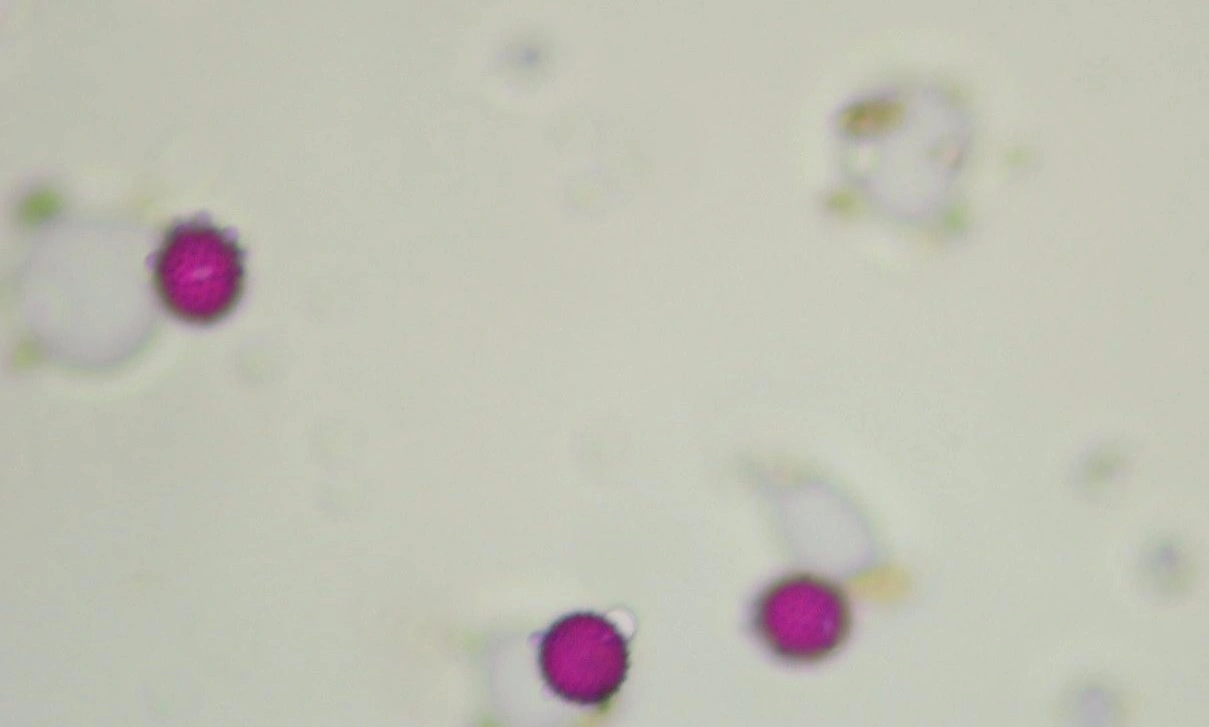
An integrated response from Italy: from continuous monitoring, to agronomic management
Ragweed is one of the most problematic invasive alien species in northern Italy. In Friuli Venezia Giulia, its spread has become a growing concern for both environmental management and public health, due to the highly allergenic nature of its pollen. Its presence is widespread in agricultural fields, urban and peri-urban areas, construction sites, and along roadsides. Very high pollen concentrations recorded by ARPA FVG (Regional Environmental Protection Agency), show significant risks for allergic individuals, with symptoms ranging from rhinitis to asthma. Clinical studies, especially in Trieste, have documented an increase in sensitization and allergic reactivity linked to rising ragweed pollen exposure.
One of the solutions adopted in northern Italy is continuous monitoring: ARPA FVG operates a network of four aerobiological stations (Pordenone, Trieste, Lignano, Tolmezzo) that provide daily data and weekly bulletins accessible online and via apps, supporting physicians and patients.
Other solutions come from agronomic management: ERSA FVG (Regional Agency for Agricultural Development) has tested pre-emergence herbicides in maize and other spring crops. These trials have shown significant reductions in ragweed seedling establishment, limiting pollen production and competition with cultivated plants. There are also the integrated strategies: beyond herbicides, management includes crop rotation, timely tillage, and mechanical removal along field margins and roadsides to reduce the soil seed bank over time.
It is important to note that all those solutions come in the context of scientific collaborations: The Universities of Udine and Trieste contribute studies on ragweed distribution, phenology, and environmental drivers, while ARPA FVG participates in POLLnet, the Italian aerobiological monitoring network, and shares data with neighboring countries such as Slovenia and Austria.
And it seems like this strategy might prove a winning one. Field tests indicate promising reductions in ragweed infestations and pollen release, although more long-term data are needed to fully evaluate sustainability. Monitoring data from ARPA FVG are routinely used by health authorities to organize alerts and preventive measures during high-risk periods. Contributions to the European Aeroallergen Network have strengthened modeling of pollen dispersion and improved identification of high-risk zones.
Since 2015, pollen concentrations in Friuli Venezia Giulia have shown a decreasing trend, partly due to the accidental arrival of the North American beetle Ophraella communa, which feeds on ragweed shoots and limits flowering. However, climate change and long-range transport of pollen from the Pannonian Plain (Hungary, Serbia) mean the threat remains. Long-term control will therefore depend on combining scientific monitoring, effective agronomic practices, and public awareness. As ARPA FVG experts emphasize, ragweed management is not only a medical or agricultural issue, but also a matter of collective responsibility.
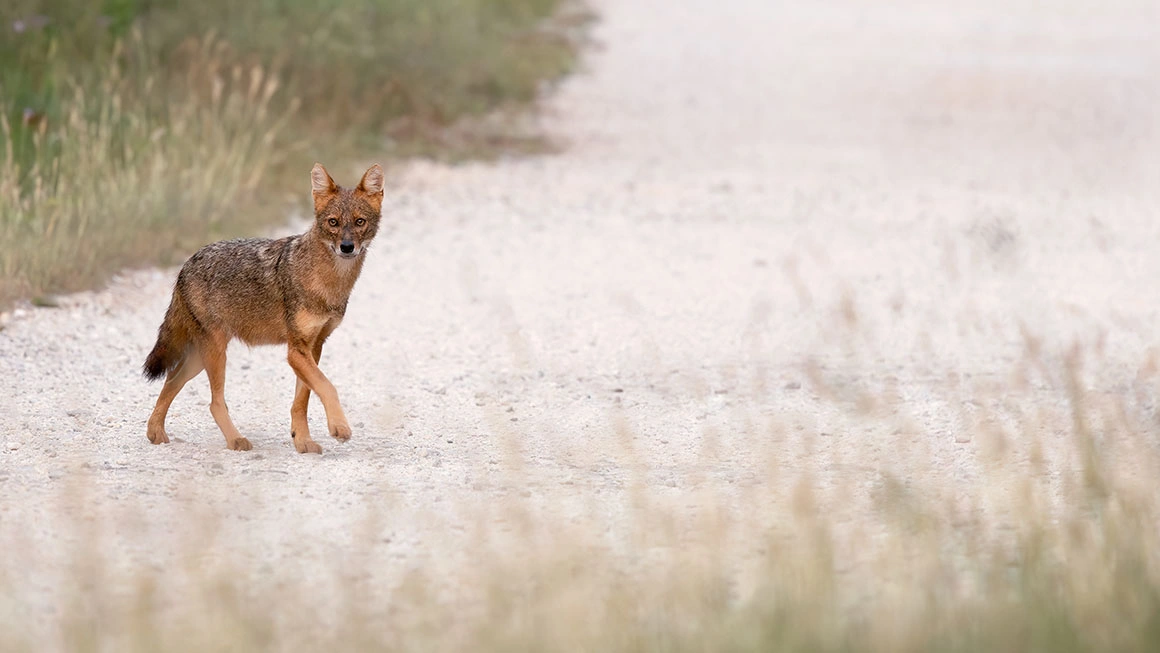
The golden jackal has a bad reputation. Italy responds with awareness and compensation
The golden jackal (Canis aureus) has become an established presence in the north-eastern region of Italy, bordering Slovenia and Austria. Arriving quietly from the Balkans in the 1980s, the golden jackal has now become a permanent and intriguing component of the region’s biodiversity. Today, Friuli Venezia Giulia is considered the main breeding stronghold for the species in Italy. In the past fifteen years, the spread of the species has accelerated so much that Friuli Venezia Giulia has become a stable stronghold in Italy, home to dozens of family groups.
An opportunistic feeder, the golden jackal’s diet includes small mammals, birds, insects, fruits, and berries, as well as scraps and waste. This broad diet brings it into competition with other predators such as the red fox, with which it appears to have a certain competitive advantage in some contexts. It is protected under the European Union’s Habitats Directive and it is not a game species in Italy. Nevertheless, its presence sometimes raises concerns. Conflicts between rural and hunting communities and the golden jackal are becoming increasingly evident, despite a total absence of recorded damage. Myths about the danger of this species have fostered a poor local perception and led to the placement of poisoned baits, driven by the belief that the golden jackal poses a serious threat to biodiversity.
According to zoologist Nicola Bressi, fears about the species are largely unfounded: “It’s a 15-kilo animal, comparable to a large fox. It poses no real danger to people, and damage to livestock is easily preventable.” Ecologically, the species provides important services: golden jackals consume large numbers of rodents, offering a valuable ecosystem contribution.
Still, conflicts with hunting and farming communities fuel distrust and misinformation. “Perceptions are very negative,” explains Stefano Percorella, coordinator of a research group focused on this specific animal. “Because it preys on young roe deer, the jackal is seen as a direct threat, but we don’t yet have solid data on its actual impact.” This climate has fostered cases of poaching and poisoning, particularly in the Gorizia Karst.
Faced with these tensions, the Region and scientific institutions have promoted a range of solutions. On the technical side, farmers are being provided with electric fencing, livestock guardian dogs, and night shelters, simple and effective measures that substantially reduce predation. A study of the University of Udine showed that farms adopting these measures suffered 38% fewer attacks compared to those without protections.
On the economic side, a compensation system has been introduced: the Region reimburses up to 100% of verified losses and supports the purchase of preventive measures. This has helped reduce the risk of illegal retaliation. On the scientific and management side, the University of Udine and the forestry corps have established a monitoring network using camera traps, genetic analyses, and acoustic surveys, with regular data exchange with Slovenia and Austria. In 2024, the first official population density estimate for golden jackals in Italy was published.
Finally, on the social and communication side, awareness campaigns have been launched to explain that the golden jackal is not dangerous to humans and can even play a positive ecological role. Looking ahead, Bressi predicts that the species will spread across the rest of Italy and may even adapt to urban contexts: “Within a few decades we might see it roaming cities at night, just like foxes in London.” Percorella cautions, however, that further research is essential: “We’ll never know how to manage it unless we truly understand its ecological and health impacts.”
Dealing with the golden jackal in Romania, where it's a „local invader”
“The Balkans are seen as the reservoir of the jackals that colonized Europe in the last century”, explains Alexandru Doroșencu, a researcher in biology at the Danube Delta National Institute for Research and Development. It arrived in Romania from Bulgaria and its presence was recorded for the first time in 1923, on the Danube islands. In the mainland Dobrogea, the Romanian region that encapsulates the Delta, the jackal has been present since the ‘50-‘60.
This environment turned out to be a very good home for the jackal. The transformation of wetland into farm land in the Delta added new food options for this animal. “There is enormous variability and adaptability to local resources, from insects and cereals, wild plant seeds, fruits, to corpses, small mammals, birds, fish, clams if necessary”, says Doroșencu.
For a long time, although it was part of the local ecosystem, this animal was not considered problematic. In the ’80, hunters would receive 1.000 lei (almost the medium wage at the time) for jackal fur, as it was seen as a rare prize. Things started changing in the ‘90, when the population started increasing drastically and started affecting the ecosystem and the people. Last year, a report estimated around 1000 jackals in the Danube Delta, which means the population is decreasing both because of the drought and less food sources, and because of the poisoning traps placed by locals.
“They attack mostly birds, sometimes calfs. I think they have eaten 50 birds since I came here”, says a local from the Danube Delta, who moved to the area three years ago. The jackals attack domestic animals, mostly poultry, and this is how humans started demanding they are hunted down. Researcher Alexandru Doroșencu has mixed feelings about hunting a solution to their expansion. “When you eliminate the jackal from an area you only have a very short window where that area actually remains jackal free”, says the biologist. “I don't know if it's worth the effort, but people get a sense of satisfaction. Hunting it's just a matter of putting people at ease, of letting them see that something is being done.” He doesn’t blame people and says he understands where this belief comes from. After the wolf, the apex predator in the area, was declared extinct in the ’50s, people were no longer accustomed to more serious predators, other than foxes and the enot dog. The laugh-like scream of the jackals contributes to its bad reputation. Some Romanian experts suggest reintroducing the wolf in the Dobrogea as a solution, as wolves would compete with jackals for food. It is not clear if the local community would support such an idea.
Alexandru Doroșencu considers prevention is the best solution, and he says the starting point should be better waste management in the Danube Delta. In the ‘90s, large landfills were built in Dobrogea, where many of the towns and villages are hardly accessible by small cars, so even more by garbage trucks. Corroborate this with the rise in consumerism after the fall of communism and the weakening of local administration, and you will start seeing more and more garbage in natural areas and around households. “In an era of food waste, species like the jackal thrive fantastically”, explains Doroșencu.
“There is always a need for balance”, says the researcher. “For a long time, the jackal was a novelty, then just another neighbor. It only became a foe only after a numerical imbalance, partly created by humans, who started to overflow the ecosystem with garbage.” So the proper storage of waste and sturdy fences around waste dumps and households are the best way to protect yourself from jackals. People should no longer leave their garbage outside overnight, waiting for the morning garbage truck, and they should keep their animals enclosed, especially in situations where they know they are more vulnerable or desirable for jackals. For instance cows, right after giving birth, as sometimes jackals will attack the newborn calf. Using large dogs for protection is also a very good solution, though dogs and jackals are related, and they do sometimes become friends, in which case dogs no longer act against jackals, as people expect them to.
Alexandru Doroșencu says there is no universal solution though. “We collect data objectively and put it in context, because we want to find solutions for each individual case. You can't find a solution for everything. Every situation, every locality, every farm has a particular situation and particular solutions need to be found for that situation.” The scientist says all human interventions regarding the jackal population should be evidence-based, as long as the changes brought by global warming, such as shorter and warmer winters, will help the species adapt even better. Doroșencu hopes that, by learning more about this animal, people will find a way for jackals to be a healthy part of the ecosystem, just as it used to be until the ‘90s, not just another threat for the locals.
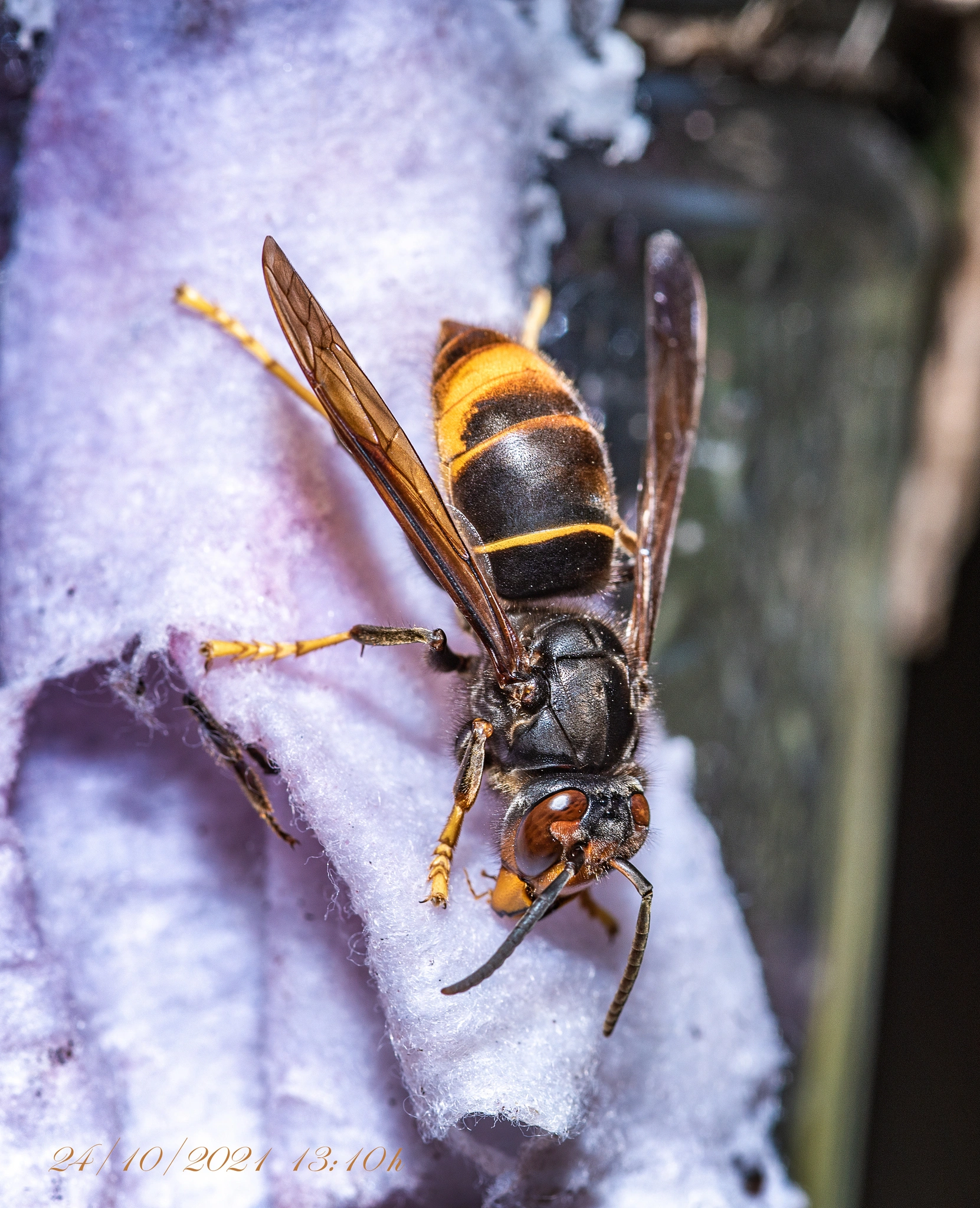
Vespa Velutina - the bee killer that is hard to stop
Vespa Velutina, or the Asian hornet as it is more commonly known, is an impressive insect. First of all, it’s large: queens typically reach about 30 mm in length, compared to workers at around 20 mm. By contrast, the queen of Vespa vulgaris, the common wasp, measures only about 20 mm. Second, it can fight. Like all wasps, they need protein to feed their larvae, while adults just need nectar or pollen. And in order to fight, it will use its size, its strong jaws and needle to win any battle. One of its favourite prays: bees. For a little gruesome details, here is what happens when Velutina attacks a bee: the hornet catches the bee in mid-air, they section its body and transform its insides into a paste that they use to feed their larva with.
In the Indo-Chinese Peninsula, where it originates from, or in Japan, where it is also an invasive species, it preys on Apis Cerana, the easton honey bee. The honey makers, although they are smaller, just like European honey bees, are not defenseless. When a hornet attacks, a bunch of bees get closer and closer to it, surrounding it, flapping their wings so fast that the temperature around the wasp rises to 45 degrees Celsius, basically suffocating the wasp. This is a defense mechanism that Apis melifera, the European honey bee, does not possess.
It is widely believed that the Asian Hornet first appeared in Europe in 2005, in France, as one queen made it there via some packed goods sent from China. Its distribution was fast: the recorded speed of distribution in France was 78 km/year. Now, 20 years later, Vespa Velutina has already spread to Spain, Portugal, Belgium, Italy, Germany, Great Britain, the Netherlands, Switzerland, Luxemburg, Ireland or Hungary. It is listed under the Regulation on Invasive Alien Species as an invasive alien species of concern for the EU, which means member states are obliged to take measures for containing the species population and, if possible, to eradicate it.
Vespa Velutina is expensive to deal with. In Korea, where it is also invasive, a study shows that the cost for apiaries necessary for managing several hornet species exceeds $60,000,000, with Vespa Velutina contributing significantly to this expense. A survey made in Spain and in France show that beekeepers end up spending 10.3% of the estimated production value on managing the species. They buy traps, reduce the size of hive entrances (so hornets cannot go in), artificially feed the bees, as they can no longer go out after food, relocate hives away from the wasps, etc. “French beekeepers, with more experience with the invasion, used lower cost control methods; higher production value," shows the study. These numbers do not include the biodiversity and agricultural costs of reducing the populations of bees, a famously efficient polinator.
Italy tries to adapt from a fight against invasion to a model of coexistence
The Asian yellow-legged hornet, first recorded in Italy in 2013, in the region of Liguria, is now one of the top threats to bees in Italy. A voracious predator and invasive alien species, it disrupts pollinator communities and undermines apiculture. Listed as a species of European Union concern, it is illegal to be transported or bred. As its eradication is no longer feasible in continental Europe, Italy’s response has evolved from emergency reactions to coordinated strategies.
Nest neutralization with powdered pyrethroids remains the main legal tool, effective in early stages, but costly when nests multiply.
Trojan horse methods, which means that hornets are treated with microdoses of insecticide that spread it within their colony, show great promise, but are not yet authorised.
The LIFE STOPVESPA project established dedicated monitoring teams, used harmonic radar to locate nests, and created a national Vespa Emergency Team. Over 2,200 nests were destroyed, slowing the spread.
The StopVelutina network gathers reports, spreads reliable information, and aligns regional interventions across research bodies, beekeeper associations, and public authorities.
New technologies such as radiotelemetry are being tested to quickly find and eliminate nests in newly invaded areas.
Meanwhile, beekeepers are adapting with protective systems: electric harps, entrance meshes, and electrified rackets. These devices safeguard hives even if they don’t reduce hornet populations. Strengthening colonies and rethinking selective breeding toward more defensive traits are also being discussed. As Laura Bortolotti, from Council for Agricultural Research and Analysis of Agricultural Economics, explains: “We cannot eradicate Vespa velutina. What we can do is contain it, reduce its impact, and adapt. Strong hives resist; weak ones collapse. The challenge is keeping populations below critical thresholds while helping beekeepers defend their colonies.” The challenge of Vespa velutina is therefore shifting from a fight against invasion to a model of coexistence; one that blends science, prevention, innovation, and cross-border collaboration.
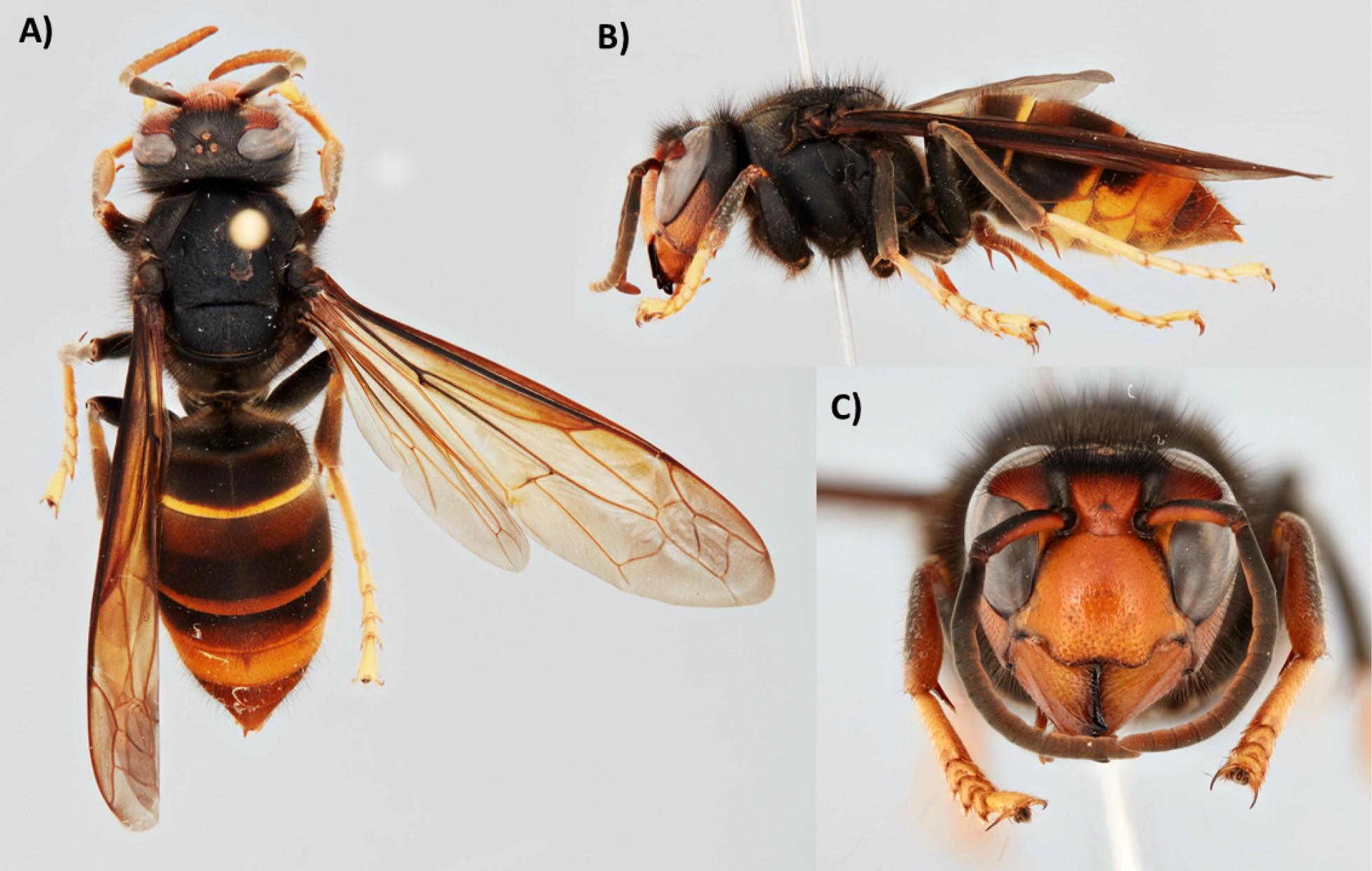
The threat Romania must do something about right away
“Unfortunately we are waiting for it to arrive. It's just a matter of time,” says Constantin Dobrescu, vice president of Romapais, the federation of Romanian beekeepers’ associations, when we start discussing the threat Asian hornets pose to bees in Romania. Seeing how the Asian hornet traveled in Europe, Romanian beekeepers started to worry about it, especially after it was reported in the neighboring country, Hungary, just over 3oo km away. They know it’s just a matter of time until the insect reaches Romania.
When we talk about invasive species, we have natural and accidental dispersion, explains Alexandra Popa, biologist at the Romanian Natural Science Museum “Grigore Antipa”. Natural dispersion refers to how far an animal can travel, naturally expanding its habitat. Imagine you are a young Vespa Velutina queen: you will not create your nest right next to your mother, as that would mean competing for the same resources. You will move further, and when you reproduce, the offspring will move further and so on. Vespa Velutina can travel up to 40 km a day for food, says Popa. “The other form of dispersion is accidental: when wood, soil, or any object where the hornet can create an embryo nest are moved from one place to another, various specimens travel as well”. A hornet colony can reach up to 7.000 individuals.
Biologist Alexandra Popa thinks that Vespa Velutina will reach Romania through a combination of the two types of dispersions, if it hasn't already. We have a lot of forests and meadows that can be great initial homes for Velutina. In local media we already saw people claiming that they saw or captured an Asian hornet, but determining whether the species has really reached Romania is a little bit more complicated. In order to formally establish that a species has reached Romania and that is invasive, people should send specimens to The National Veterinary Authority (Autoritatea Național Sanitar Veterinară și pentru siguranța alimentelor - ANSVA), which can confirm that this is in fact Vespa Velutina. Another criterion is that several specimens survive and start successful colonies. If a queen wasp gets to a new place, but it dies or the first nest is destroyed immediately, there is no invasion case.
Two years ago, Alexandra Popa was part of a study group coordinated by the Environment Ministry of Romania, which was tasked, among other things, to see if the Vespa Volutina had reached Romania. She says that at the time they could not find any traces. Constantin Dobrescu, vice president of Romapais, is not quite sure we are not already in the very early stages of an invasion. “Unfortunately, in Romania we don’t have a system of detection, an ongoing monitoring system and we haven’t prepared in any way so far”.
Through the organization he represents, Dobrescu and his beekeeper colleagues addressed the Ministry of Agriculture with a plan for monitoring and preparation, but says they were told there are no funds for it. He is not surprised, as Romanian authorities do not have a great track record in responding to beekeepers' needs. Romania is one of the few European countries that asked each year for a special dispensation to allow farmers to use neonicotinoids based pesticides, despite knowing that they harm the bees, one of the reasons they are forbidden in the European Union.
What Dobrescu and his association can do about this new potential risk is organize small awareness campaigns. On their website they have a section dedicated to the Asian hornet, with basic information about the insect. But apart from that, Romania badly needs efficient methods to deal with this insect once it is here. It is so important to act fast, for good damage control.
Editor: Andra Matzal
This article was supported by Journalismfund Europe.


